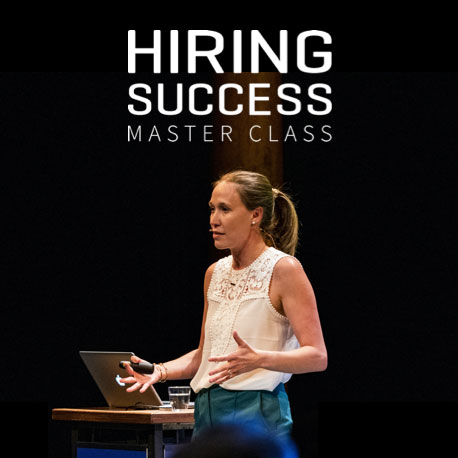In a 2007 interview, Steve Ballmer, the former CEO of Microsoft, declared the following: “There’s no chance that the iPhone is going to get any significant market share. No chance.”
Whoops.
Was Ballmer wrong? Yep. Was he lacking in foresight? Probably. Was he alone in that regard? Certainly not.
The truth is, most people are apprehensive about technologies that are new or unfamiliar. For example, it wasn’t that long ago that automation in TA and HR tech was frowned upon and seen as either being a gimmick or a crutch for the lazy. If my memory serves me correctly, that was around 2012 or 2013. Since then, popular opinion of automation has changed substantially. Now, many would consider it to be an indispensable work aid. Not everyone, though. And that’s unfortunate.

In the same way that there are still smartphone skeptics who cling to their flip phones (no offense!), there are still companies—even at the enterprise level— that have a disdain for automation. In response to the topic at hand, I’ve heard several people say some variation of the following: “We’re traditional here at XZY Company. We like to do things ourselves and have a team that’s perfectly capable of managing everything for us.”
Translation: we’re still managing recruiting and hiring through a spreadsheet.
Whoops.
At the end of the day, to each their own. However, let me tell you this: talent acquisition teams that reject automation, yet hope to succeed, can be likened to a Formula One driver turning up to the 2020 World Driver’s Championship in a 1950 Alfa Romeo 158. They may be traditional and capable of managing, but they’ll be left at the starting line, overpowered by the competition, disqualified from future participation, and likely forgotten as time goes on. A sad, but necessary truth.
“Whereas previously, automation may have been seen as a shoddy substitute for skilled labor, it’s now widely viewed as an empowerer for TA teams.”
To that end, the sooner TA and HR leaders lean into automation, the better. However, for some, this will first require a change in mindset. Whereas previously, automation may have been seen as a shoddy substitute for skilled labor, it’s now widely viewed as an empowerer for TA teams.
For example, automating tedious tasks—like interview scheduling, job advertising, and resume parsing—can save hiring teams a lot of time. In turn, this allows them to focus on the more strategic and human-centric parts of their job, like interfacing with candidates, stakeholder management, employer branding, and recruitment marketing.
Oh, and let’s not forget one of the most beneficial upshots of automation—significant cost savings.
The above-mentioned perks are just the tip of the iceberg, though. There is an automation tool for almost every part of the hiring process and a veritable Aladdin’s cave full of vendors eager to make your every TA wish come true. Technology and magic become virtually indistinguishable when the following recruiting remits are automated:
- Job posting and distribution
- Candidate assessments
- Job alerts
- Candidate sourcing
- Internal employee identification
- Screening questions
- Auto-rejection communication
- Adding candidates to talent communities
- Talent pool engagement
- Updating candidates on step changes
- Interview scheduling
- Hiring workflow steps
- Hiring manager notifications
- Video interviewing
- Reference and background checking
- Offer and contract management
- Onboarding
- Reporting and analytics
But, if you’re not careful, it can be easy to get carried away by all the bells and whistles. Therefore, it’s really important to research products ahead of time and thoroughly assess the value they’ll potentially add to your function before getting trigger happy with your budget.

Here are some simple questions that you and your colleagues should consider when shopping around.
Will this product…
- drive measurable ROI both to our budget and revenue?
- increase productivity for talent acquisition and hiring managers?
- increase our hiring velocity?
- enhance or improve our candidate experience?
- help improve the quality of our candidates and new hires?
- increase the diversity of our hiring?
- seamlessly plug into our current TA tech ecosystem?
- allow us to automate (or further automate) parts of our hiring process while keeping the candidate experience compelling, genuine, and human?
For the record, I’m not suggesting that talent teams currently lacking the capabilities to automate tasks should go from one end of the spectrum to the other overnight. Take your time, really drill in on what’s important to you, your specific needs, and the overall hiring experience you’re trying to create. It’s fine to take small steps at first and focus on one or two key objectives, such—such as improving Hiring Budget—which, understandably, is a major concern for most companies right now.

However, don’t let short-term circumstances prevent you from thinking about long-term possibilities. Even if there’s a lull in your company’s recruiting and hiring, you can take this time to formulate a game plan that will prepare you for the inevitable upswing. Take note of technologies you can adopt when that time comes to streamline your work and help your organization generate the kind of revenue that’s only possible through Hiring Success.

 Enroll in the Master Class & earn 6 SHRM credits
Enroll in the Master Class & earn 6 SHRM credits